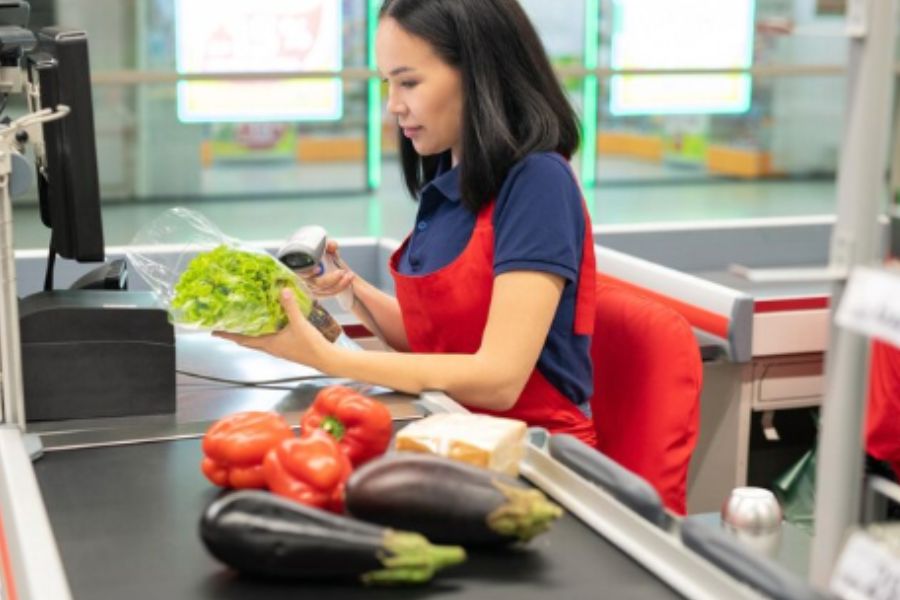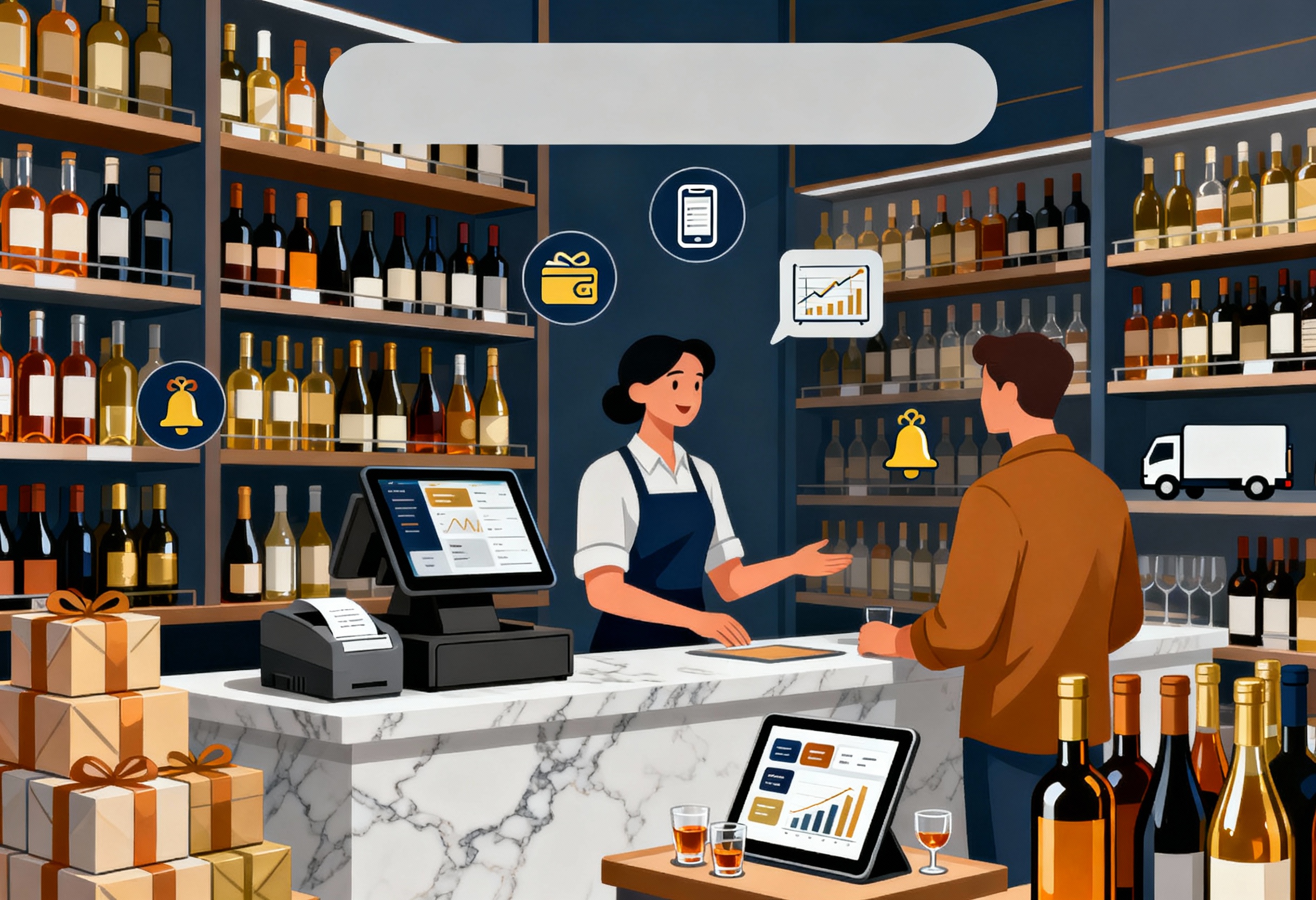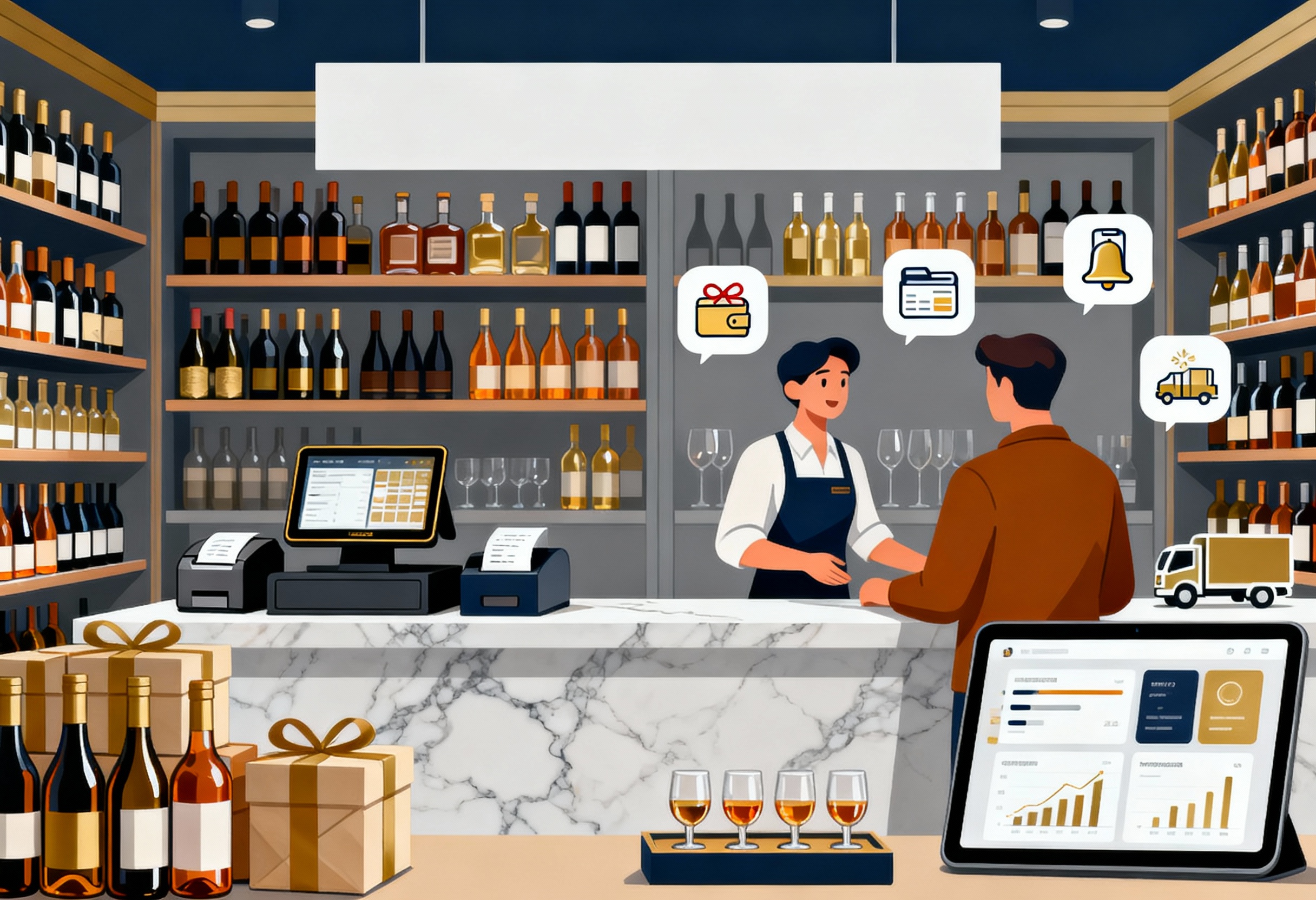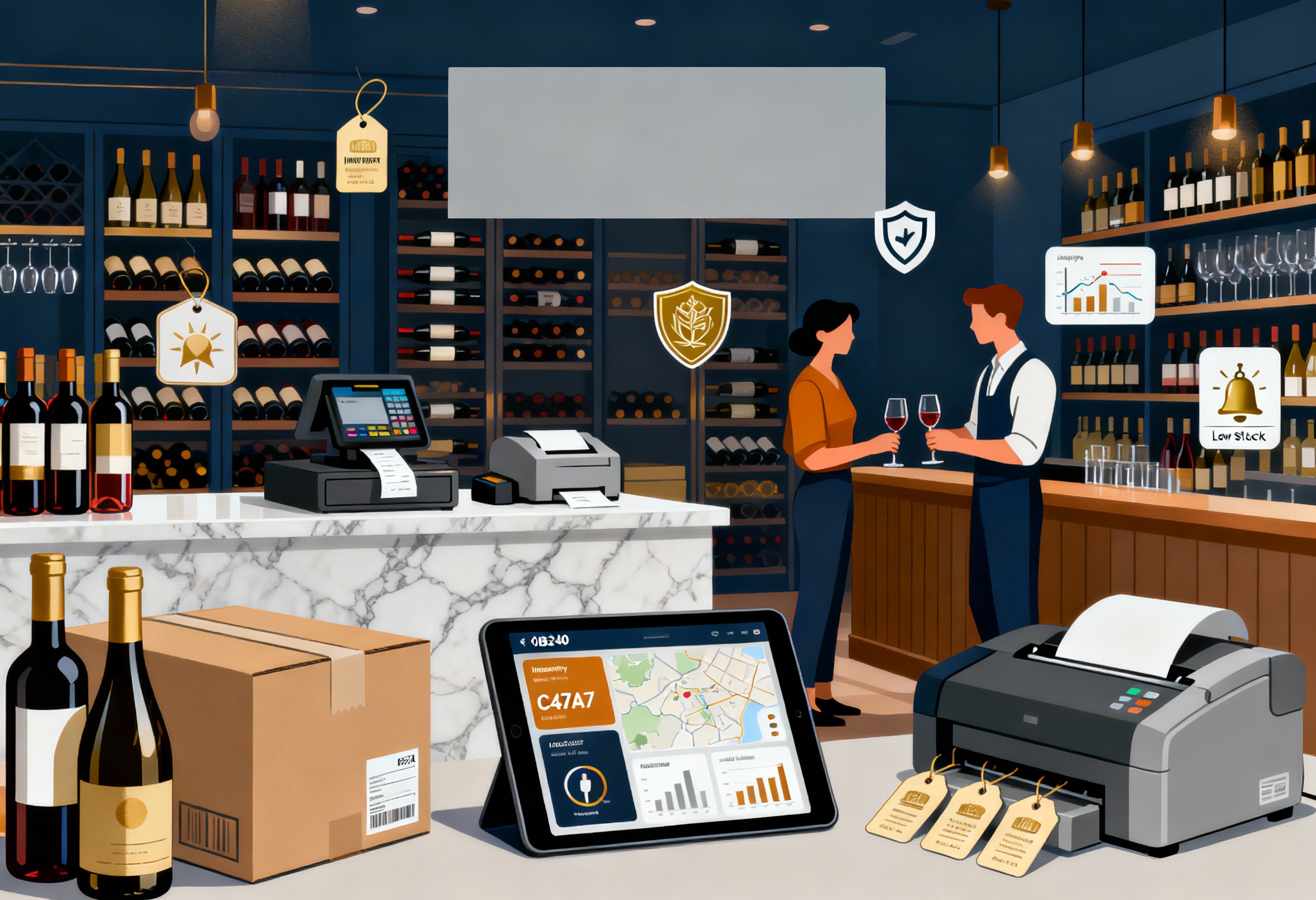In Indonesia’s rapidly growing grocery retail sector, estimated to reach over USD 169 billion by 2025, the stakes are higher than ever for store owners to keep up with shifting consumer demands, evolving regulations, and increasingly tech-savvy shoppers. One overlooked error in selecting a point of sale (POS) system can ripple into long-term operational inefficiencies, customer dissatisfaction, and compliance headaches. In this article, we’ll explore what we will discuss: the grocery market in Indonesia, eight key mistakes to avoid when selecting a POS system, and the best POS system for grocery store Indonesia.
Highlight:
- Choosing a generic POS system risks inefficiency and poor inventory control in Indonesia’s diverse grocery market.
- Overlooking local tax compliance and offline functionality can cause financial and operational setbacks.
The Grocery Market in Indonesia
Indonesia has one of the largest grocery markets in the region, supported by a population of over 270 million. While traditional retailers continue to dominate rural areas, urban centers are experiencing a rise in modern grocery formats. Key players in the market include Indomaret, Alfamart, Hypermart, and Super Indo.
Moreover, e-commerce and online grocery delivery services such as Tokopedia, Bukalapak, and GrabMart are gaining popularity, especially in the wake of the COVID-19 pandemic.
As a result, grocery businesses must strike a balance between modern convenience, personalized customer service, and cost-effectiveness. A grocery store POS system in Indonesia needs to be flexible enough to cater to diverse operations, whether it’s a large supermarket chain or a small neighborhood store.
8 Mistakes to Avoid When Choosing the Best POS System for Grocery Store in Indonesia
With the country’s unique retail landscape, where traditional markets coexist with modern supermarkets and e-commerce platforms, choosing the best POS system for grocery store Indonesia that aligns with local needs and challenges is significant. Avoiding common pitfalls can improve efficiency, compliance, and customer satisfaction.
Misunderstanding the Specific Needs of Grocery Retail in Indonesia
Grocery stores in Indonesia operate in a complex environment marked by diverse customer behavior, perishable inventory, and high transaction volumes. Many retailers mistakenly opt for generic POS systems that don’t cater to grocery-specific features like barcode-weight integration, expiration tracking, and bulk discounting. This results in poor inventory control and a lack of operational agility.
Tips:
- Choose a POS system designed specifically for grocery or retail environments.
- Ensure it supports key grocery functionalities like auto stock alerts, multi-unit pricing, and expiration date tracking.
- Conduct a needs assessment before approaching vendors.
Overlooking Regulatory Compliance and Local Tax Requirements
Indonesia’s taxation system includes VAT (PPN), regional tax variations, and digital tax regulations. A POS system that doesn’t comply with these can lead to financial penalties and disrupted operations. Many imported systems fail to align with Indonesian accounting and tax reporting standards.
Tips:
- Work with a local POS vendor familiar with Indonesian tax laws.
- Confirm whether the system automatically calculates PPN and generates tax-compliant receipts.
- Ask for local references or case studies from similar grocery stores.
Ignoring Integration with Inventory and Supply Chain Systems
Grocery retailers manage hundreds (or thousands) of SKUs. A POS system that doesn’t integrate well with inventory and supply chain platforms causes disjointed stock management, leading to overstocking or stockouts both harmful to profits and customer trust.
►►► Optimal solution set for businesses: Multi store POS, Next-gen POS, Inventory Management Software (MSI), Self Service, Automation, Backorders
Tips:
- Select a POS with real-time inventory tracking and supplier order automation.
- Verify compatibility with your existing ERP, accounting, or warehouse systems.
- Look for platforms that allow easy data import/export and API connectivity.
Choosing Price Over Long-Term Value
It’s tempting to go for the cheapest solution, especially for small or medium-sized groceries. However, low-cost POS systems often lack critical features, support, and future upgrade options. This leads to hidden costs, including lost sales, frequent downtimes, and the need for early replacement.
Tips:
- Assess the Total Cost of Ownership (TCO), including upgrades, training, and support.
- Consider ROI-based features such as customer loyalty programs and promotions.
- Prioritize scalability and security over just initial affordability.
Failing to Assess the Scalability of the POS Solution
What works for a single-location mini-market might not suit a growing retail chain. Without scalability, you’ll be forced to switch systems once you expand, creating disruptions and data loss risks.
Tips:
- Choose POS software that supports multi-store operations, centralized reporting, and role-based user access.
- Ask vendors about their largest clients and how the system scales with increased demand.
- Plan for future integrations like e-commerce, mobile checkout, and self-service kiosks.
Neglecting User Experience and Staff Training Needs
POS systems that are not intuitive create longer queues, billing errors, and frustrated employees, especially in a high-turnover retail environment. Many businesses overlook the learning curve and fail to train staff properly, decreasing productivity and customer satisfaction.
Tips:
- Look for a POS with a clean, multilingual, and user-friendly interface.
- Ensure the vendor provides comprehensive onboarding and training modules.
- Consider running a test shift to evaluate ease of use under real conditions.
Underestimating the Role of Customer Support and Vendor Reputation
Technical issues are inevitable. Poor vendor support can lead to extended downtime and lost sales, especially in busy retail hours. Choosing a vendor with limited support options or a poor service reputation is a costly mistake many retailers realize too late.
Tips:
- Read online reviews and case studies on vendor responsiveness.
- Ensure the vendor offers local support, ideally 24/7, and can handle issues in Bahasa Indonesia.
- Ask about SLAs (Service Level Agreements) and escalation procedures.
Forgetting to Consider Internet Reliability and Offline Capabilities
Internet disruptions are still common in parts of Indonesia. POS systems that rely solely on cloud connectivity can grind to a halt during outages, preventing sales and damaging customer trust.
Tips:
- Choose a hybrid POS system that can operate offline and sync data once the internet resumes.
- Ask vendors to demonstrate offline functionality in-store.
- Ensure the system doesn’t lose transaction history or stock updates when working offline.
Top 5 Best POS Systems for Grocery Store Indonesia
We’ll look into the top five of the best POS systems designed to meet the unique needs of Indonesian grocery retailers.
ConnectPOS
If you’re managing both physical and online stores, ConnectPOS stands out as the best POS system for grocery store indonesia. Designed for omnichannel operations, it syncs inventory across offline and online channels in real-time. This is particularly useful for Indonesian grocers who also sell via platforms like Tokopedia or Shopify.
Key features:
- Real-time synchronization between offline and online stores for accurate inventory tracking
- Multi-store and multi-warehouse management, ideal for growing or franchised grocery brands
- Offline mode support, ensuring uninterrupted sales during internet outages
- Customizable promotions and loyalty programs, tailored to Indonesian consumer behavior
- Supports Bahasa Indonesia, IDR currency, and integrates with local tax configurations
- Compatible with major eCommerce POS platforms, including Magento POS, Shopify POS and WooCommerce POS
- 24/7 customer support, with experience in the Southeast Asian market
Overall, ConnectPOS is suitable for mid-to-large grocery stores and supermarket chains seeking an integrated omnichannel solution with localized support.
Toast POS
While Toast POS is known in the food service industry, its features are surprisingly beneficial for grocery stores with ready-to-eat sections or small cafes. Its touch-based interface allows for quick order entry, and its inventory tracking works well with short shelf-life products.
Key highlights:
- Designed for hybrid food environments, such as grocery stores with in-store bakeries, cafés, or ready-to-eat areas
- Touchscreen-based ordering interface, perfect for fast-paced environments
- Ingredient-level tracking, helpful for stores that prepare fresh food on-site
- Built-in analytics and sales reporting, to monitor product performance and labor costs
- Cloud-based with offline capability, allowing continuous operation during outages
- Mobile ordering and customer display screens, for an improved checkout experience
Grocery stores with food service components that need kitchen management and detailed prep tracking.
Lavu
Lavu offers a flexible, iPad-based POS system that suits small-scale grocery stores and minimarkets in urban or rural Indonesia. As one of the best POS system for grocery store Indonesia, it’s lightweight, easy to deploy, and highly customizable to track essential grocery metrics.
Key features:
- iPad-based mobile POS system, great for small grocery stores, kiosks, or minimarkets
- Easy to install and operate, requiring minimal training
- Custom product categories, to handle various grocery goods from fresh to packaged
- Real-time inventory and ingredient tracking, to reduce food waste and optimize restocking
- Affordable pricing with flexibility, suitable for budget-conscious stores
- Integration with major payment gateways, offering multiple payment methods
Small neighborhood groceries and mobile vendors are looking for a low-cost, easy-to-use POS with mobility.
Lightspeed
For established supermarkets or rapidly growing grocery chains, Lightspeed provides a powerful retail POS with deep analytics and multi-store management. It enables detailed vendor management, sales forecasting, and seamless integration with accounting or ERP systems.
Key highlights:
- Robust inventory management, capable of handling tens of thousands of SKUs
- Vendor and purchase order management, simplifying stock replenishment from suppliers
- Multi-location and multi-channel capabilities, ideal for chain supermarkets
- Advanced sales reporting and forecasting tools, helping to make data-driven decisions
- Integrated eCommerce tools, for online grocery sales and delivery
- Employee permissions and scheduling, for large staff operations
Large or growing supermarket chains need advanced inventory control and centralized business management.
Square POS
Square POS is the go-to choice for new or independent grocery store owners looking for simplicity without sacrificing functionality. Its clean interface and plug-and-play hardware make setup a breeze, and the built-in payment processor keeps operations streamlined.
Key features:
- Free basic POS version, excellent for startups and small store owners
- User-friendly interface, requiring minimal setup and staff training
- All-in-one solution, including POS, inventory, and payment processing
- Integrated sales and inventory reports, accessible from any device
- Offline transaction support, perfect for areas with unreliable internet
- Flexible hardware options, including tablets and card readers
Independent grocers, minimarts, or small businesses wanting a cost-effective, easy-to-use POS to get started quickly.
FAQs: Best POS System For Grocery Store Indonesia
- How much does a grocery store POS system typically cost in Indonesia?
The cost of a grocery store POS system in Indonesia ranges from $30 to $200 per month, depending on features.
- What are the most common challenges grocery stores face after POS implementation?
Common challenges include integration issues, staff training, inventory management errors, and adapting to new workflows or systems.
- Can a POS system help with inventory tracking for perishable goods?
Yes, a POS system can track expiration dates, monitor stock levels, and send alerts for perishable goods management.
Conclusion
Selecting the best POS system for your grocery store in Indonesia can feel overwhelming, but it’s a step that can make or break your business. Make sure to pay attention to local tax laws, ensure seamless integration with your existing systems, and consider how scalable your solution is for future growth. While the decision may seem daunting, finding the perfect POS system can set you up for success and help your business thrive!
ConnectPOS offers a tailored, omnichannel solution with offline mode, inventory tracking, and local support ideal for Indonesian grocery retailers. Contact us to discover how it can streamline your grocery business today.
►►► Optimal solution set for businesses: Shopify POS, Magento POS, BigCommerce POS, WooCommerce POS, NetSuite POS, E-Commerce POS



